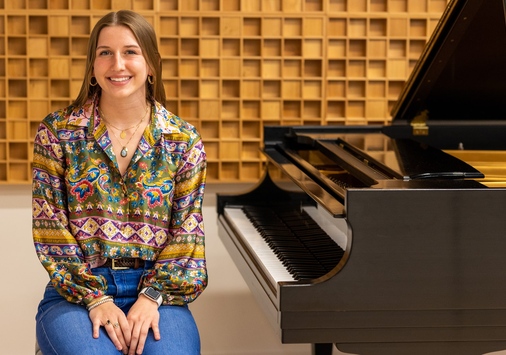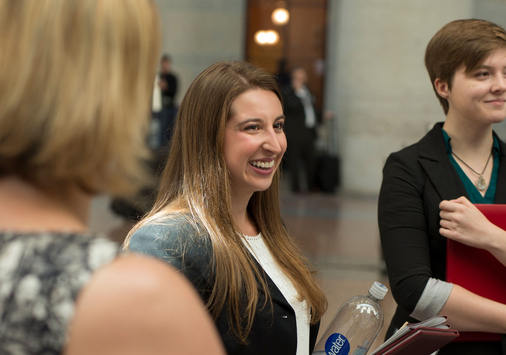
Julie Mujic is a Visiting Assistant Professor in the Global Commerce program. She recently wrote an article for Belt Magazine about her family and their migrations from Croatia to Cleveland, and from Cleveland to Columbus, finding bittersweet insights even about her own children.
Excerpted from Belt Magazine, by Julie Mujic.
According to family lore, my husband’s mother brought with her to the United States three plates, three spoons, one paring knife, and one pot. It was 1968 and she, her husband, and their four-year-old son spent a few months in an Austrian refugee camp before embarking on a one-way trip to Cleveland, Ohio. They settled there among fellow Croatian immigrants, welcomed a daughter weeks later, and began to make a life. They did not arrive in Cleveland randomly or without support. There was already an established Croatian Catholic church on the near east side that helped new immigrants find their footing, as well as family members and friends from the old country who helped them secure jobs and a car and provided childcare.
Decades later, the youngest son in that family and I moved our two daughters from Cleveland to Columbus, with a four-year layover in Connecticut. A moving truck delivered all of our belongings from one house to another, not repeating the painful separation of things from people that his parents faced. We have settled here nicely and have no plans to leave, but as the months have turned into years, I have a new appreciation of what it feels like to still understand your identity as being from somewhere else. Even as long as I live in Columbus—build friendships here, raise my children here, contribute to the economy here—I am still from Cleveland and of Cleveland. My Twitter profile proclaims that I “root for all things Cleveland.” My suburban minivan sports a CLE sticker paying homage to each of the city’s three professional athletic teams. When I talk about Cleveland, I still call it home. And yet, with each passing day, I recognize that I, too, live separated from that geographic identity, and am failing to transmit it to the next generation.
My husband’s family has already been through this process. They have been Croatian first and foremost, merely residing in this country but with heartstrings ever tugging back across the Atlantic. Here, Croatian flags hang in homes (and in the church), traditions are tightly held, and songs and dances from the homeland celebrate their dearest occasions. Their people recreated a mini-Croatia of their own in Northeast Ohio, and thus there were few demands on the degree to which the first generation assimilated over time.
However, as generations are apt to do, many children of these immigrants, now adults themselves, are flying farther from the Northeast Ohio village. They are charting their own paths, perhaps away from their aging parents, as they become more wholly American in language, ideology, culture, and experience. Born here, they cannot, as much as they try, really understand “being Croatian” the way their parents did. The parents watch this evolution with sadness and some level of disappointment, although they never intended to return themselves to the place they fled. With every wave of immigration in U.S. history, the degree to which the children of immigrants self-identify as being from the old country has faded through the years. We understand this process.
And yet, here it is, happening in my own life. My children will not view themselves as being from Cleveland. Their youth will not be spent at Squire’s Castle, Buttermilk Falls, or the West End YMCA. They will not grow up with Biagio’s donuts, Petti’s pizza, or Slyman’s reubens. No matter how often we pilgrimage to Progressive Field for an Indians game, or to the American-Croatian Lodge for a family wedding, they are not of that place. They are not of the Cleveland I know and love, and they are not of the Croatian version of Cleveland their ancestors created.














